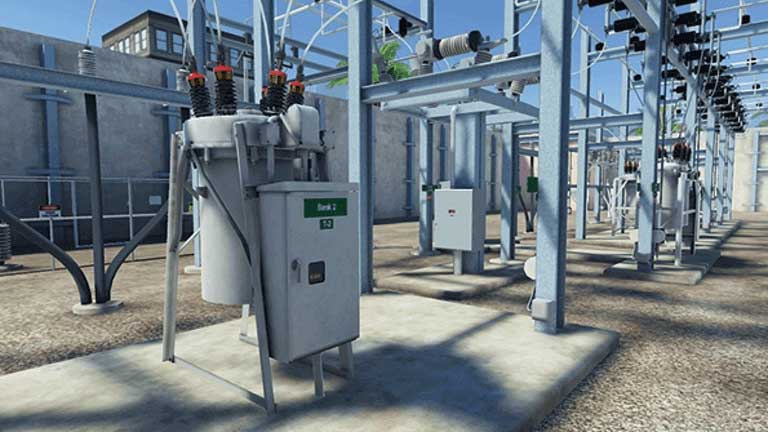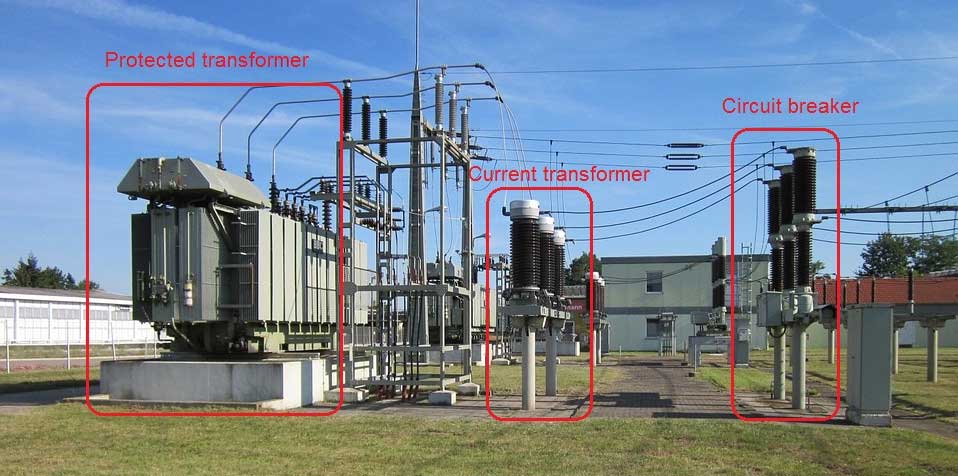Substation training course in Dhaka
The demand for substation training courses is increasing day by day. Demand for substation training courses is at an all-time high, with public-private cloud projects, more than 100 economic zones, and new power plants. Simultaneously, Bangladesh Automation Technologies’ Sisters Concern Substation Training Course in Dhaka has been conducting substation training with excellent reputation and success. The engineers of the substation training course here are hardworking, wise, and talented. In their contact, you will be an expert in the basics of the substation course and will be looking for the best mentor in the future.
The substation training course provides an overview of substations, primary braking devices, transformers, secondary switching devices, switchgear lineups, instrument transformers, relays, meters and instruments, transducers, cables and bus wires, controls, and communications. And how they all interact. The course involves the application, design, and testing, and maintenance of low, medium, and high voltage circuit breakers, as well as disconnecting the switches.
What is a substation?
Substation Training Course in Dhaka is a reputed institute. Undoubtedly, in the race to retain the excellence of substation training in Bangladesh with an excellent reputation and success in the world of substation training, we are undoubtedly a few steps ahead. It can also be used to control generators, electrical circuits, etc. Substations are mainly used to convert AC (current exchanging) to DC (direct current). Some types of substations come with a small built-in transformer as well as related switches. Other kinds of substations are extensive with the help of different types of transformers, equipment, circuit breakers, and controls.
Type of substation:
Substation Training Course in Dhaka is a Sisters Concern of Bangladesh Automation Technologies. We provide various types of substation training through our skilled engineers. These include step-up type substations, step-down transformers, indoor substations, outdoor substations, distribution underground distribution, switchyards, customer substations, and system stations.
Step-up type substation
The step-up type substation receives a power supply from the nearest office. It uses a vast power transformer to improve the voltage level for transmission to remote areas. In the substation, power transmission should be possible using transmission transport on the transmission line. This substation can similarly be a pressure on the incoming ball that is acquired by the aging plant. The energy obtained can be used to power the plant in contraceptive activities. Any substation includes circuit breakers for switch age such as out-of-administration and necessary external transmission.
Step-down type substation
In electrical systems, the step-down type substation is kept in different focus. They specialize in other interfacing pieces of the system, and it is a master of sub-transmission or circulation lines. This type of substation can change the transmission voltage to sub-transmission voltage (69 kV). Changing over-voltage lines can source transport substations.
Distribution type substation
Distribution type substations are set up where the primary voltage distributions are stepped down to supply voltage to the customers using the distribution network. The voltage of any two phases will be 400 volts, and the voltage between neutral and any grade will be 230 volts.
Industrial substation
Industrial substations are similar to utility substations, but the profiles of the operators are different. Such as the organization of databases and parameter screens. In the case of concessions, energy production is the object of supply. This material can be easily changed.
Primary Substation
The primary substations are the interconnection between high voltage and medium voltage. The elementary grid substations are linked with mass gravity centers alongside direct lines of transmissions. The voltages are stepped down at various voltage ranges for secondary communication.
Secondary Substation:
The secondary substations are lined side by side, with secondary transmission lines adjoining to loads. The voltages here are further stepped-down for distribution. The secondary substations are the interconnection between medium and low voltage.
Underground substation
Underground substations are commonly referred to as “high tension vaults” located at the bottom of large buildings owned by several of the city’s largest companies. Power substations installed under facilities that can draw and hold large amounts of electrical energy are much safer against tampering and other environmental hazards or hazards. Since electrical energy is supplied at very high voltages, the cost of energy consumed will also be much lower if charged at a significant rate.
Electrical substation equipment:
Different types of electrical equipment are required to transfer electrical power from production units to distribution units. Our Substation Training Course in Dhaka has a massive collection of these types of equipment. Among them, equipment like bus bar, separation, power transformer, etc., are integrated into the electrical substation through which the customers get electricity supply. The main tools required for substation installation are discussed in detail below:
Bus-bar
The bus bar is the most critical component of an electric power substation. It is a type of conductor that carries electrical current and with which many connections are made. In a word, a bus bar is a kind of electrical bend where an electric current enters and exits. Damage to the installation due to heating can be avoided.
Isolated
It is a type of switch that is only used to disconnect the circuit when only the current is interrupted. Separate parts of electrical isolation systems that are designed for safe maintenance. Isolation is usually used for repair or replacement at the end of the breaker.
Power transformers
The most common purpose of a power electronic transformer is to convert transforming current power from one AC voltage to another AC voltage. Another general goal is to provide electrical isolation between electrical circuits. Energy is the product of voltage current.
Power transformers are used to increase the voltage for conduction at the generating station and further distribution to the main step-down transformer substations by keeping the voltage down. Typically naturally cool, oil-immersed type-to-winding, three-phase transformers are used for ratings up to 10 MVA.
For a rating of more than 10 MVA, the transformer is usually cooled to an air blast. For very high ratings, force oil, water cooling, and air blast cooling can be used. These types of transformers are operated at full load and disconnect during light load. Power transformers are arranged in banks and can be cast in parallel with other units.
Circuit breaker
A circuit breaker is a device that is fully capable of breaking electrical circuits in normal and abnormal situations, such as short and open circuits. The breaker can operate automatically and clean the fault current safely and quickly. These are switching, and current disrupted devices. Typically, a circuit breaker consists of a combination of static and movable contacts. The coils can be separated using the operating mechanism.
Capacitor Bank
Each of the capacitors in the capacitor bank is connected in series or parallel. It stores electrical energy for itself through an electric charge. The capacitor bank draws the maximum current, which increases the power factor of the network and the power transfer capacity of the system.
Earthing switch
An earthing switch is a switch that connects a conductor to the earth so that it can discharge the conductor’s charges to the earth. Earring switches are usually installed in isolation frames.
Relay
A relay is a device that opens or closes contacts for other electrical control activities. It detects intolerable or undesirable conditions in a designated area and commands the circuit breaker to disconnect the affected area. The relay thus protects the system from damage.
Air brake switch
Switches whose contacts are open in the air and are achieved by compressed air, this type of switch is called an air brake switch. Air brakes act as a dielectric medium for brakes. These are single-pole air-brake switches and gang-operated air-brake switches.

